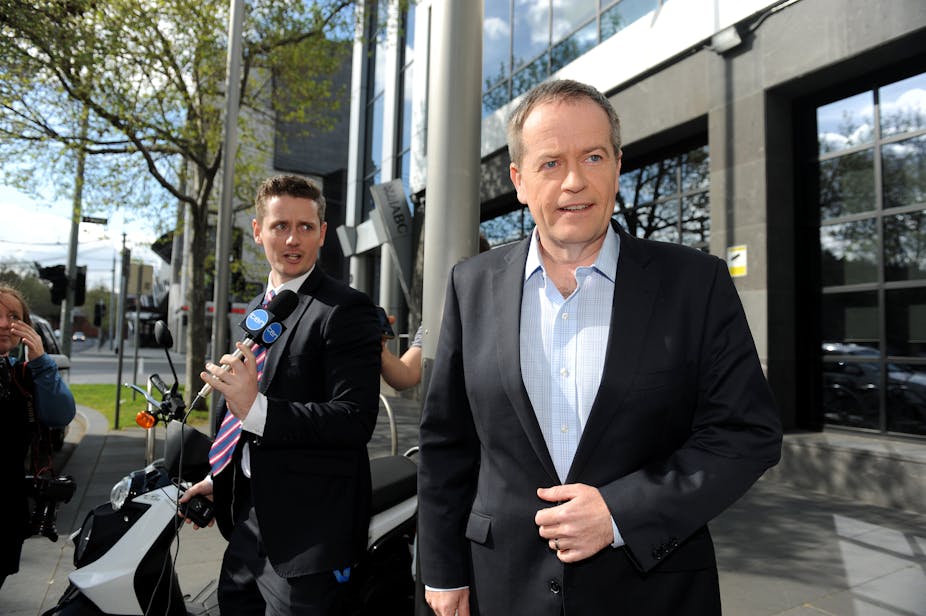With the 2013 election over, Labor has the opportunity to regroup and plan for how it will win future contests.
Ever since Julia Gillard took over the Labor leadership in 2010, the party has appeared to be disunited over the question of leadership. With Rudd now having decided to step down as leader following his election defeat, the party has an opportunity to start afresh.
Traditional thinking would suggest that the person who becomes leader immediately after an election loss would not be leading the party to electoral triumph. After all, Labor has to win back about 20 seats at the next election. This is presumably an unachievable target after what was a heavy loss. On the other hand, Labor can take heart that the Coalition almost clinched victory in 2010, just three years after losing government.
Labor’s new leader must give the clearest indication that the party has moved on from the Rudd-Gillard battles. It would be ideal for the next Labor leader to be selected without a contest occurring, in order to present itself as a more united team and attempt to bury the memories of constant leadership tensions. Whoever becomes leader, they will have to marshal a weary Caucus and mobilise support to make Labor a vibrant and viable alternative government.
One silver lining in the party’s defeat was the fact that many of its newer generation of MPs were able to defend their seats. With that in mind, here are some prospective candidates for the party’s leadership.
Bill Shorten
One of the more controversial figures in Labor politics due to his involvement in backing Gillard in 2010 then Rudd in 2013, Bill Shorten has been representing the Victorian seat of Maribyrnong since 2007.
Having been in parliament for just six years, Shorten can be seen as one of Labor’s new generation of leadership possibilities. He has strong experience in union politics and has been the driver of some significant programs including the National Disability Insurance Scheme and the Better Schools funding scheme since Rudd’s return to the leadership in June.
Shorten, a major player in the party’s Right faction, was tipped to be a Labor leader by the likes of Bob Hawke even before he entered parliament. It remains to be seen, however, whether he would he wish to take the helm immediately after a heavy loss.
Jenny Macklin
First elected to represent the federal district of Jagajaga in Victoria in 1996, Jenny Macklin has been in important leadership roles in the ALP. She was deputy to Simon Crean, Kim Beazley and Mark Latham and stepped down when Rudd first assumed the leadership in late 2006.
Macklin’s ministerial experience has been in the community services area and has generally been free from major controversies. In 2013, however, she was lambasted for reducing benefits to single parents while saying that she “could” live on the dole.
Macklin is from the Left faction of the party and is a long-shot in the Labor leadership contest.
Anthony Albanese
Another mover and shaker from the Left faction is Anthony Albanese. “Albo”, as he is also known, has maintained his position as the Leader of the House of Representatives throughout the Rudd and Gillard leaderships. Under Rudd mark two, he also assumed the deputy prime ministership.
Seen as an affable and able figure, Albanese has evolved to be an elder statesman of the party. Like Macklin, Albanese began his parliamentary career in 1996, representing the Sydney seat of Grayndler. There has been speculation that he has been considering his future in politics but he has become a popular figure in the ALP.
He has a high public profile and is well-placed to become a solid post-election leader.
Jason Clare
Another of Labor’s new generation, Jason Clare has been representing Paul Keating’s old seat of Blaxland since 2007. The now-former home affairs and justice minister arguably does not have the public profile of Bill Shorten and is seen to be a leader in the making - rather than a ready-made leader - at this time.
A member of the Right faction, Clare has been seen as a strong media performer and an important figure for the party’s future.
Chris Bowen
Elected in the “Latham election” of 2004, Chris Bowen was tipped to lose his western Sydney seat of McMahon at this election. He didn’t, and now the former treasurer is well-placed to be a major shaper of Labor’s future.
From the Right faction, Bowen has positioned himself as a force for reinvigorating Labor. His recent book, Hearts and Minds: A Blueprint for Modern Labor, made a case for reforming the party.
But, like Clare, Bowen may be seen to be a longer-term prospect for Labor rather than an immediate option.
Tanya Plibersek
A very experienced Labor figure, Plibersek has been representing Sydney since 1998. From the Left faction, Plibersek has been health minister since 2011 and has been seen by Labor as one of its best communicators.
While she has significant support from some quarters, Plibersek may be overshadowed by Shorten and Albanese continuing to attract the spotlight.

Tony Burke
From the western Sydney seat of Watson is another from the class of 2004, Tony Burke, who has built a high public profile - most recently as immigration minister.
His parliamentary performances and track record as a minister have made many Labor insiders regard him highly. Like Clare and Bowen, he may be a future option for Labor.
Kevin Rudd
While Rudd has resigned from party leadership, he remains in parliament. His performance while delivering the concession speech on Saturday night suggested he can remain upbeat even in the face of defeat. While chances of his return are slim, he has returned from oblivion in the past.
Wrap up
Despite the election loss, Labor still appears to have an experienced group of MPs to put into leadership positions. It remains to be seen how the party, and its new leader, will approach its turn on the opposition benches.

